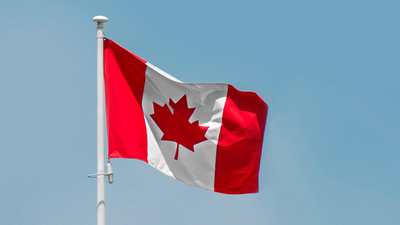ARTICLE AD BOX

Canada is set to revamp its immigration strategy, aiming to establish itself as a global hub for highly skilled talent, Prime Minister Mark Carney indicated in a recent address, according to media reports.
He stated that the forthcoming federal budget would introduce a comprehensive immigration plan tailored to align Canada’s intake with its workforce requirements and overall capacity. Carney highlighted that the initiative would not only streamline entry for newcomers but also nurture innovation through dedicated skills training and apprenticeship programmes.The prime minister further explained that the plan would specifically target scientists, innovators, and professionals in high-demand sectors.
He asserted that the government’s approach was designed “to do better, for newcomers, for everyone,” signaling a strategic pivot toward attracting talent that can drive economic growth and technological advancement in the country.
After Germany, Canada Aims To Lure Indian Tech Talent Amid Trump’s H-1B Visa Fee Hike
Targeting tech talent amid US visa hurdles
Carney’s focus on tech talent comes against the backdrop of recent US policy changes. The administration of President Donald Trump imposed a $100,000 fee on new H-1B visas, creating uncertainty and frustration among companies that rely on global talent for programming, engineering, and other critical roles.
According to Carney, Canada is considering measures to attract professionals who might have otherwise pursued opportunities in the United States, particularly those affected by the H-1B visa policy shift. It is a way to draw skilled employees who once turned to south of the border, signaling Canada’s intent to position itself as the preferred destination for top-tier innovators.
Continuity and challenges in immigration policy
While promising innovation-driven reforms, Carney has maintained several immigration caps introduced by former Prime Minister Justin Trudeau.
These measures were initially intended to curb the rapid influx of foreign students and temporary workers, following Canada’s population surge, which had become one of the fastest in the developed world.Carney now faces the dual challenge of expanding opportunities for highly skilled migrants while rebuilding public trust in immigration policies. Public support for immigration has fallen to historic lows amid concerns over the cost of living, housing affordability, and stagnant wages, particularly affecting younger Canadians.
A strategic pivot towards global competitiveness
Experts suggest that Carney’s approach signals a broader vision: Positioning Canada as a global hub for high-skilled talent, particularly in science and technology. With global mobility increasingly influenced by political shifts, Canada’s new immigration plan represents both an opportunity and a test. Success will hinge on the government’s ability to attract the right talent, integrate newcomers effectively, and maintain public confidence in the country’s economic and social fabric.ConclusionCanada’s immigration strategy under Mark Carney is poised to blend pragmatism with ambition. By targeting high-skilled professionals and aligning immigration with workforce needs, the government hopes to stimulate innovation, fill critical labour gaps, and ensure the country remains a global magnet for talent, all while navigating the complex realities of domestic economic pressures and shifting public opinion.

 2 hours ago
4
2 hours ago
4









 English (US) ·
English (US) ·